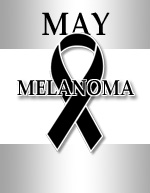Welcome to the DermacenterMD Blog
Posts for tag: protection
 How does ‘Slow Sun’ cause damage?
How does ‘Slow Sun’ cause damage?
‘Slow Sun’ or ‘Incidental Sun’ is the sun we get without even knowing it.
When we get in and out of our car going to and from work we often do not realize we might be getting sun exposure. Unfortunately, the small segments of exposure to harmful UV rays we get intermittently throughout our life actually add up. It has been estimated up to 85% of the cumulative sun exposure comes from this ‘Incidental Sun.’
What does chronic sun exposure do to the skin?
It can lead to signs of sun damage. This includes roughness in texture, brown or red spot development and wrinkles most often. These features are often felt to be signs of aging. It is not as noticeable at first, but something does occur with continued exposure. This something is the development of precancerous lesions termed ACTINIC KERATOSIS. These are usually rough and scaling growths on the sun exposed part of the body. In addition, high lifetime UV exposure can lead to an increased risk of BASAL CELL CARCINOMA and SQUAMOUS CELL CARCINOMA. So each day we get some exposure we are increasing your risk of skin cancer.
Be aware of your cumulative sun exposure, even that from childhood. All sun exposure plays a role in the development of skin cancer and precancerous lesions. Don’t forget to wear your sunscreen and cover up!
 Today is National Melaoma Monday- a day to bring awareness to a potentially deadly form of skin cancer. Often times skin cancer is not thought of as being as dangerous as other forms of skin cancer, but in reality it is just as dangerous. In fact, skin cancer is the most common form of cancer in the United States. It is estimated that one in every five Americans will be diagnosed with skin cacner at some point in their lifetime and it is estimated that more than 8,500 people are diagnosed with skin cancer in the U.S. everyday.
Today is National Melaoma Monday- a day to bring awareness to a potentially deadly form of skin cancer. Often times skin cancer is not thought of as being as dangerous as other forms of skin cancer, but in reality it is just as dangerous. In fact, skin cancer is the most common form of cancer in the United States. It is estimated that one in every five Americans will be diagnosed with skin cacner at some point in their lifetime and it is estimated that more than 8,500 people are diagnosed with skin cancer in the U.S. everyday.
Those are some pretty astounding statistics. Thankfully, the two most common forms of skin cancer, basal cell and squamous cell cancer, are easily treatable and rarely spread. However, melaoma is very dangerous and can potentially be life threatening. That is why it is so important to check your skin at least once a month, as well as have your skin examined by a dermatologist once a year. Catching melanoma early is the key to sucess.
In honor of Melanoma Monday, take some time today to read about how other's lives have been touched by skin cancer. It can happen to anyone at any age reguardless of skin tone or ethnicity. The American Academy of Dermatology asked people to share their personal stories to help shed light on the dangers of melanoma. Below you will find the link to read the stories on their webiste.
AAD Personal Stories of Skin Cancer: https://www.aad.org/public/spot-skin-cancer/get-involved/share-your-story/personal-stories
Also, in addition to seeing your dermatologist every year, it is important to be checking your own skin on a regular basis to look for any suspicious lesions. In this video, Dr. Moore shares the ABCDEs of melanoma so you can be aware of what to look for when you examine your own skin.
ABCDEs of Melanoma: https://www.youtube.com/watch?v=TFOWxd0hu78
If you believe you have a suspicious lesion, give us a call at 574-522-0265 to scheudle your skin check today! It could save a life!
 From The Skin Cancer Foundation
From The Skin Cancer Foundation
Source: www.skincancer.org
A new study appearing in the journal Nature greatly reinforces the findings of an earlier landmark genetic study linking damage from the sun’s ultraviolet rays (UVR) to melanoma, the deadliest form of skin cancer. In 2009, researchers out of Hinxton, England, used new molecular technology to examine the complete genetic material (the genome) of a melanoma taken from a patient with the disease, identifying thousands of mutations (genetic flaws) caused by damage from solar UVR. The study has been seen as the greatest evidence to date that UVR causes genetic damage that may lead to melanoma.
Now, researchers at Harvard and MIT have studied the genomes of 25 melanoma patients. They discovered a specific gene, PREX2, that was damaged and mutated in 11 of the 25 genomes. They observed, furthermore, that the amount of mutations in this gene was directly linked to chronic UV exposure; the more exposure patients had, the more mutations they had in PREX2, apparently confirming the role of sun damage in melanoma development. PREX2 mutations have occasionally been reported in colon, lung, and pancreatic cancer, and frequently reported in breast cancers; they have been found to accelerate tumor formation in human melanocytes (the pigment cells where melanomas develop).
PREX2 normally interacts with a certain tumor-suppressing protein; UV damage may cause changes in PREX2 that allow the protein to turn from a tumor suppressor into a tumor promoter, thereby leading to melanoma.
“We still can’t say we know exactly how it works,” says Levi A. Garraway, senior coauthor of the study. “But PREX2 may be a very new category of mutated cancer genes that point us to at least one and maybe more pathways worth targeting therapeutically in melanoma.”
Professor Mark Middleton, director of Cancer research UK’s Experimental Cancer Medicine Center at the University of Oxford, said that the study highlighted the important role played by sun damage in melanoma, and emphasized the need to follow simple sun safety measures such as shade, clothing, and SPF15+ sunscreen.
When you head outside, hopefully you always make it a point to put on your sunscreen. Your initial thought may be to apply sunscreen to your face and body, but what about you lips? Your lips can actually develop skin cancer. Yep, that’s right. Basal cell and squamous cell carcinomas, the two most common types of skin cancer, are frequently found on or around the lips. The best way to protect yourself from developing skin cancer on your lips is to protect them with sunscreen. Many people are in the habit of applying lip balm to their lips every day. This is a great way to protect your lips from the harmful rays of the sun. Many lip balms have SPF built right in. It only takes a few seconds to apply (and reapply) lip balm throughout the day. Lip balm is easy to keep with you, as well. You can slip it into your bag or carry it around in your pocket. Not only will you have healthy, beautiful and moisturized lips, you will be protecting yourself from skin cancer by applying lip balm with a built-in SPF.
Below are some great and affordable lip balms that can have built-in SPF and can be found at your local drug store:
- ChapStick Ultra SPF 30
- Hawaiian Tropic Tropical Lip Balm SPF 45+ Sunscreen
- Neutrogena Norwegian Formula Lip Moisturizer SPF 15
- Banana Boat Aloe Vera with Vitamin E Sunscreen Lip Balm SPF 45
Archive:
Tags
- dry skin (2)
- moisturizer (1)
- sensitive skin (3)
- PA (2)
- Skincare (2)
- skin cancer (29)
- cancer (6)
- facts (1)
- skin (19)
- dermatology (22)
- skin care (19)
- cosmetic (2)
- wrinkles (1)
- Botox (4)
- Dysport (3)
- sleep (1)
- look good (1)
- daily routine (1)
- healthy lifestyle (1)
- doctor (2)
- patient (1)
- sun protection (5)
- sunscreen (14)
- aging dermatology (1)
- providers (1)
- tanning (2)
- sun (6)
- UVA rays (2)
- UVB rays (2)
- melanoma (10)
- Acne (2)
- Treatment (2)
- sunscren (1)
- sun exposure (5)
- Melanoma Monday (2)
- Skin Cancer Awareness Month (1)
- education (2)
- skin cancer specialist (1)
- basal cell carcinoma (1)
- squamous cell carcinoma (1)
- ingredients (2)
- improve your smile (1)
- cosmetics (1)
- laser (1)
- fillers (2)
- sunburn (3)
- avoid the sun (1)
- hat (1)
- sun clothing (1)
- SPF (1)
- Rosacea (3)
- NP (1)
- Nurse Practitioner (1)
- mid-level provider (1)
- physician (1)
- dermatologist (6)
- cosmetic dermatology (4)
- anti-aging (2)
- youthful looks (1)
- Eczema (2)
- rash (2)
- itch (1)
- the rash that itches (1)
- reduce itch (1)
- itching (1)
- getting along with others (1)
- basal cell (2)
- squamous cell (2)
- detection (1)
- Mohs surgery (2)
- photoaging (1)
- Inspiring (1)
- word of the day (1)
- inspiration (3)
- uplifting (1)
- protection (4)
- lips (1)
- reduce wrinkles (1)
- look younger (1)
- encouragement (1)
- never give up (1)
- you can do it (1)
- medical school (1)
- dreams (1)
- brown spots (1)
- moles (2)
- liver spots (1)
- age spots (1)
- Abe Lincoln (1)
- life lessons (1)
- lip cancer (1)
- health (12)
- motivation (1)
- work (1)
- people (2)
- home life (1)
- lifestyle (1)
- ABCDEs of Melanoma (1)
- mole (1)
- skin check (2)
- skin facts (2)
- odd (1)
- fun (1)
- interesting (1)
- lung cancer (1)
- disease (1)
- Christmas (2)
- gifts (1)
- sun burn (1)
- winter skin tips (1)
- itchy skin (1)
- winter skin (1)
- myths (1)
- myth busted (1)
- skin protection (1)
- sunscreen safety (1)
- specialist (1)
- red skin (1)
- irritation (1)
- feel good (1)
- helping (1)
- help (1)
- helping others (1)
- treatment options (1)
- skin health (9)
- Vitamin D (2)
- tanning beds (1)
- skin health. dermatology (1)
- sunshine (1)
- awareness (1)
- prevention (1)
- sun damage (3)
- connections (1)
- working together (1)
- health care (1)
- biotin (1)
- medical (1)
- aging (1)
- elkhart (1)
- Roger Moore (1)
- check (1)
- skin type (1)
- skin cancer prevention (1)
- gift guide (1)
- Christmas gift guide (1)
- Dr. Roger Moore (1)
- holidays (1)
- family history (1)
